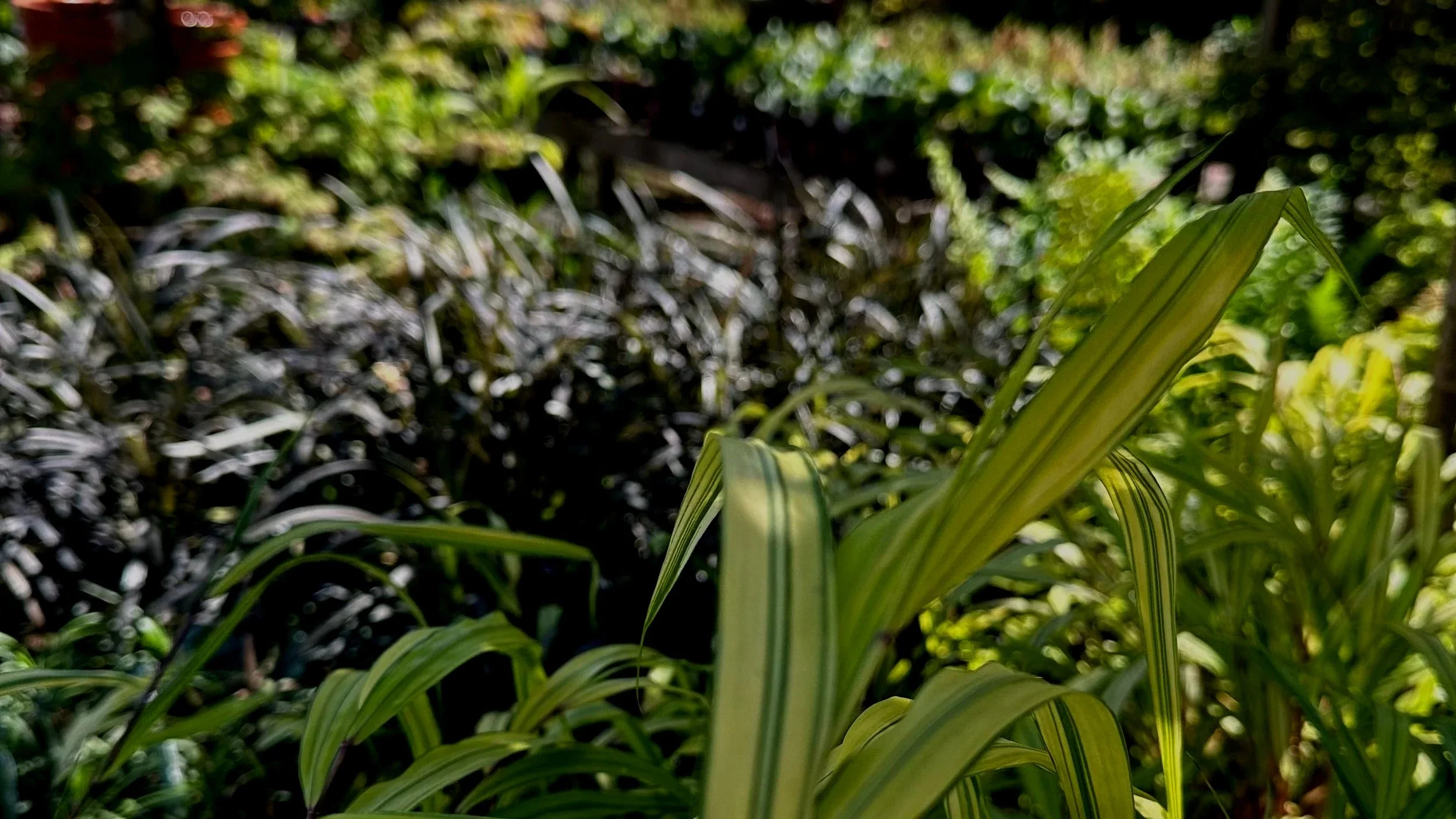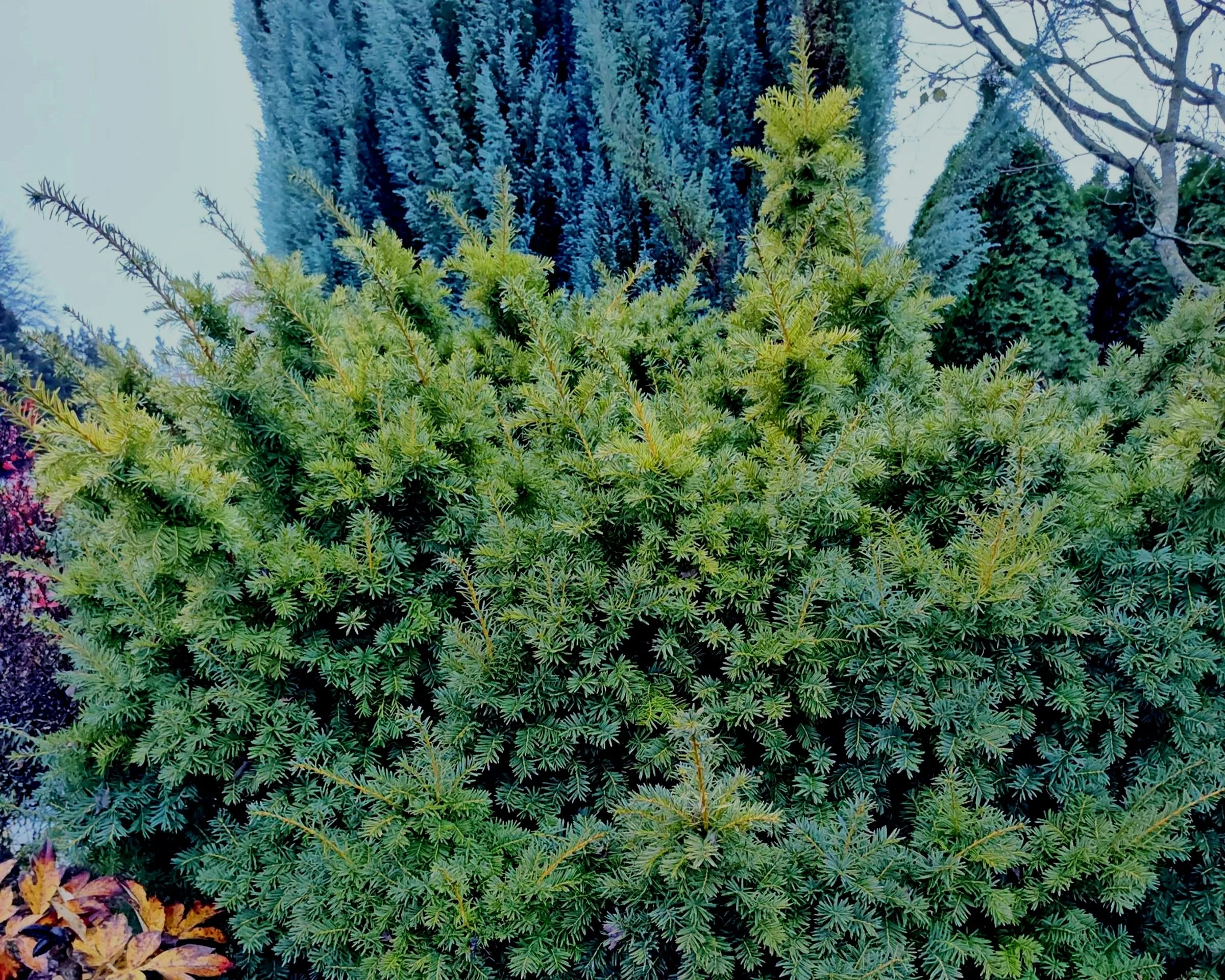Now that we are in the full swing of autumn, ornamental grasses in our region are starting to strut their stuff. Instead of “bloom” I get to talk “plume” this week, and they are certainly “pluming” at the moment! As I walk my own landscape, the many grasses I have planted over the years make me smile and even though they look great throughout the season, autumn is truly their time to take center stage. Grasses provide many worthwhile attributes in any garden, two of which are sound and motion. As the blades sway and whistle in the wind, pause to admire them both aesthetically and phonically. Add in texture, contrast and the vibrant fall colors and grasses represent easy yet magnificent specimen plants.
Let me say that I rarely find a grass I do not care for. There are numerous good species and cultivars of each to ponder, perfectly suited to thrive in our Western Washington gardens. Switch grasses (Panicum sp.), Maiden grasses (Miscanthus sp.), Moor grasses (Molinia sp.), Fountain grasses (Pennisetum sp.) and many more are all landscape worthy choices, full of both color and plumage. I thought it might be fun this week to bring up a couple of species that I think are underutilized in our area; Big Bluestem (Andropogon cvs.) and Little Bluestem (Schizachyrium cvs.) grasses. These are not only very cold hardy, but they thrive in sun and on neglect, exhibiting superior drought tolerance once established. With our dry summers this can really come in handy. They are adaptable to almost any soil and really only need minor maintenance a couple times each year. As a bonus, browsing deer and pesky rabbits will also leave them alone! I would feed them with an organic transplant food (like Sure Start from E.B. Stone Organics) at planting to help establish the roots and then maybe once each March with a simple granular organic food as well - if they are happy, I doubt you will ever have to apply the spring fertilizer dose. Most years I simply add a bit of mulch around the crown on mine and they typically respond by thriving for another year, the best kind of thank you for any gardener.
Once a year, sometime after they go dormant around the holidays (but definitely before spring growth happens), you should cut off all the old growth a couple inches above the soil level. I used to tidy all of my grasses up going into winter, but surprisingly enough for OCD me, I now wait until around the first of March. I have tried to evolve and appreciate a touch of brown in winter, enjoying the frosty blades over the dormant season. Once that old growth is recycled to the great compost heap in the sky each spring, fresh foliage emerges. These wonderful grasses will start anew, providing another year of texture, sound, motion and finally color and plumes in fall once again. With taller growers I will often clip some of the blades off in fall to use as decorations in lieu of the common corn stalks. Not sure if Martha is proud of me, but please tell her I am trying my crafty best.
If you desire height on your grasses, Big Bluestem (Andropogon sp.) is the way to go. These perennials are important prairie natives from the plains to the Atlantic coast, and even up into some Canadian provinces and Mexico too. They are very adaptable, help birds with shelter and seeds, and honestly thrive in poorer soils just as well as great garden soil. One surely will make a statement, but consider a group of three, or even a row of these along a sunny fence for maximum landscape impact. Here are a few varieties I suggest looking into…
‘Blackhawks’: This striking variety emerges purplish-green each spring, then rapidly grows to about 5-feet tall and 2-feet wide by fall. Blades get deeper in color throughout the summer maturing to almost black, combined with plenty of plumes, they make quite a statement each autumn.
‘Red October’: Another fabulous flavor that emerges with deep red highlights, intensifying over the summer to a final show of deep scarlet red. Clumps reach about 6-feet in height and 2-feet in spread each season. Plumes are more in the burgundy red tones on this one.
‘Holy Smoke’: This impressive cultivar can reach about 6-feet tall and 2.5-feet wide each season. Foliage starts as a subtle blue-green color with maroon highlights. With cooler temperatures in the fall, a kaleidoscope of purple, red, rusty orange and even a hint of pink emerges.
If you want to stay a bit smaller, go with Little Bluestem flavors, just as showy while packing a big punch in a tidy package. These perennials are native across nearly the same range as their Big Bluestem cousins we talked about above and just as adaptable to poor soils and summer drought. They emerge in spring with bluish-green color, taking on redder tones as the seasons progress. Plumes are plentiful and add a nice purplish accent starting mid-summer. These persist a bit into winter for added interest – again, think motion, sound and color. Plant multiple clumps, spacing plants about 2-feet apart and the result is an impressive swathe of glorious grass. A couple great selections are listed below…
‘Standing Ovation’: This is an excellent cultivar that sports lovely blue-green blades in spring maturing into lovely shades of purple, red and even orange by fall. Clumps will reach 2 or 3-feet in height with strong, non-floppy stems.
‘Jazz’: If you like a touch of variegation like I do, this is the one for you. Foliage emerges a striking silvery blue, then takes on shades of coppery rust in fall. Purplish plumes start in mid-summer and silvery seeds persist nicely through the winter. Clumps are tidy and reach about 2.5-feet tall.
‘Little Red Fox’: Each spring new growth emerges a bluish-green color, but this one takes on more red hues in summer. In fall colors mature into shades of red and purple, with the plumes displaying prominent silvery seeds. Tidy clumps reach about 2.5-feet in height and 1.5-feet across.
I sincerely hope that you are in “American meadow mode” now and considering adding some of these lovely plants to your collection. When you marry their landscape impact to their resilient adaptability, durability and drought tolerance, they are hard to beat. Stop into your local garden center this time of year to see these and many other lovely ornamental grasses. Speak with a Certified Professional Horticulturist about your grassy needs and let them steer you to the perfect flavor(s) that suits your garden. Whether you go big or small, all the Bluestem Grasses are sure to please.



